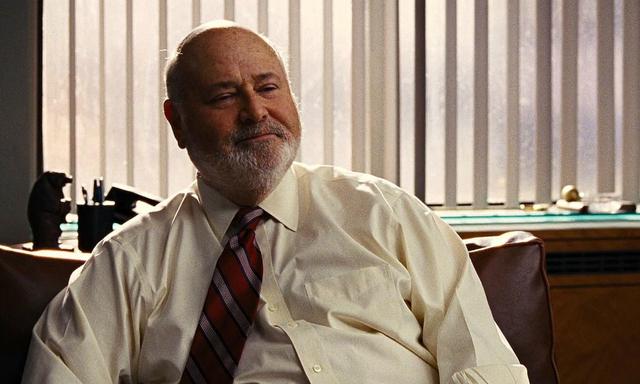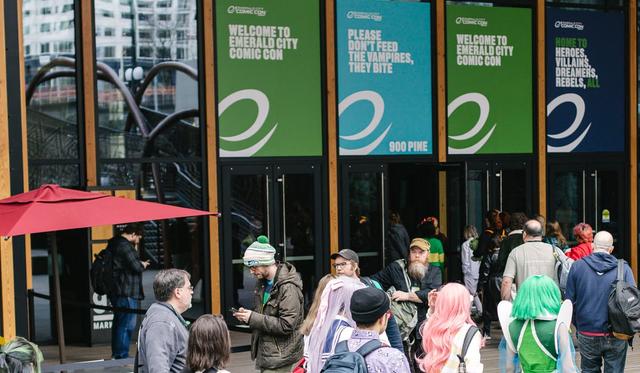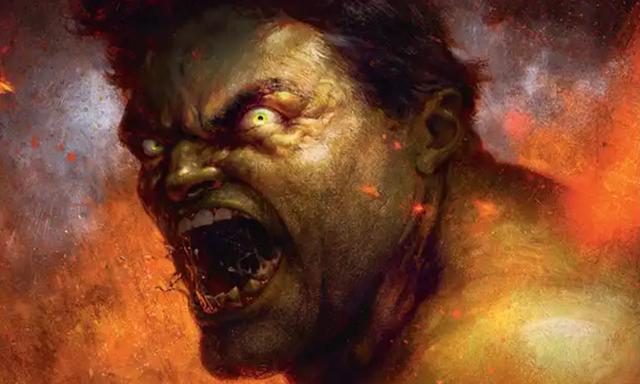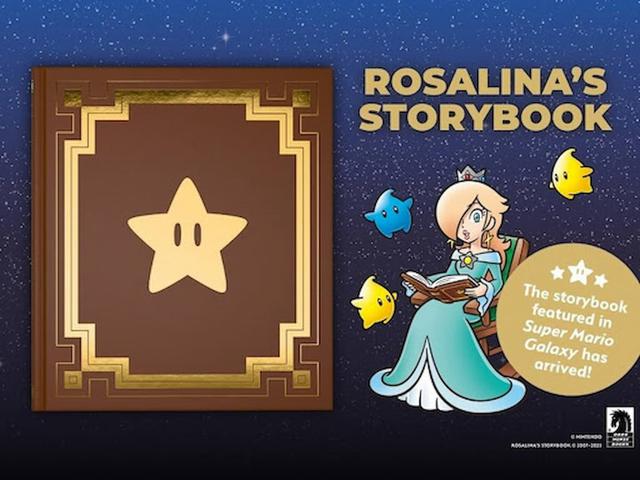If you click on a link and make a purchase we may receive a small commission. Read our editorial policy.
Dark Crisis creators Joshua WIlliamson and Daniel Sampere get spoiler-y about the first issue, the first scene, and that shocking last page
As Dark Crisis sweeps across the DC Universe, comic book creators Joshua Williamson and Daniel Sampere unpack the crossover event’s explosive opening issue.

Ever since the modern DC Multiverse was reborn at the end of the 2020 crossover event Dark Nights: Death Metal, sinister forces have been at work to consume it. The culmination of this war for the fate of reality has officially kicked off with DC’s latest epic event Dark Crisis, written by Joshua Williamson, illustrated by Daniel Sampere, colored by Alejandro Sánchez, and lettered by Tom Napolitano. And with the first explosive issue out, Williamson and Sampere are ready to pull back the curtain on Dark Crisis #1.
With the Justice League having seemingly perished fighting against Pariah and the Great Darkness (a corrosively cosmic entity intent on destroying the multiverse), the DC Universe mourns its greatest heroes. While Superman’s son Jon Kent moves to assemble a new team to replace the Justice League and defend the DCU, Deathstroke leads the Secret Society of Super-Villains to make his bid to wipe out the world’s heroes once and for all. And as Dark Crisis continues, DC has announced a line of tie-in specials, under the banner 'Worlds Without a Justice League,' revealing many of DC’s fallen heroes imprisoned in their own pocket dimension by Pariah.
And now Dark Crisis' principal creators, Williamson and Sampere, walk us through Dark Crisis #1’s big moments, explain where its main characters’ heads are currently at, and tease what readers can expect as the series and 'Worlds Without a Justice League' specials unfold.

Popverse: This opening issue pays off Shadow War and Justice League #75, with the death of the Justice League. Why did you want to start Dark Crisis with a candlelight vigil?
Joshua Williamson: Early on, I knew I wanted to open up this one differently, with that first page being the birth of legacy in the DCU. I remember talking to editorial about it, saying it’s such a different opening to any of the other crises we’ve seen. I also knew I didn’t want a lot of internal monologues so I knew I wanted to open with Nightwing making a speech and I realized it should be at a vigil, that’s why we set it up with the vigil.
I wanted to start in a place that was different from what we’ve seen before, that was a big piece of it, and then Daniel took it and made it look amazing. That opening sequence has some of my favorite pages, the opening page with Bruce [Wayne] and Dick [Grayson], then the history of legacy in the DCU, and then the two-page spread of the vigil; I think that’s a showstopper. Daniel and I have talked about people seeing those spreads and thinking it’s amazing, it looks so beautiful. I think it was something important to show people in the first five pages because everything is right there.
In those first five pages, you have the birth of legacy between Nightwing and Bruce, the two-page spread with the legacy stuff, and then the vigil. I think in those first five pages, we give you an idea of what this book is going to be like. It also gave Daniel an opportunity to cut loose and do some really cool stuff. The first two-page spread put up front that this is a crisis and the second allowed Daniel to do something different and ground it in something somber.
This really does set the tone for the story while delivering its mission statement, with Nightwing protecting the light as Deathstroke blows it out. Daniel, how did you want to invite readers and set the scene visually with this opening sequence?
Daniel Sampere: Usually I’m super-critical of my own work but I’m super proud of this opening scene because I think it was so well-thought out. The script was perfect, with the light that comes the dark and then we go into the legacy and the big spread saying this is a crisis, like Joshua was saying. That was super hard but super fun to do, like a big puzzle and, as the pieces came together, it was super satisfying to do.
We changed the tone drastically with the vigil, going dark and sad. We end this opening like we started, with black panels, but the [second] black panel is Deathstroke blowing out a candle, it’s perfect, starting with black going to light and finishing the same way. I think it’s a very cool opening and really sets the tone for the readers with what’s coming.

A lot of this first issue is Dick Grayson and Jon Kent reacting differently to their grief while Green Lantern comes down like a thunderbolt between them. Where is Hal Jordan’s mind at right now in the story?
Williamson: Hal has always been a bit of a loose cannon and the moment he finds out what’s happening, he says, 'Bullshit! This is what we’re doing!' and charges immediately. I think people forget that Hal is also a legacy character – he’s probably the most veteran Justice League character around at this point – but he bounces in thinking he’s going to take care of this. There’s some really cool stuff with him in issues #2-3, he plays a really major role across the whole thing. Part of it is that Daniel is a really huge Green Lantern fan and it gives him a lot of really cool Green Lantern stuff to draw.
Hal Jordan’s mindset is very gung-ho, like 'If somebody hurt my friends, I’m coming for them!' That’s his attitude and he’s fearless, he’s going into the dark to find out what really happened to the Justice League. Some of my favorite parts of the book is the stuff with Hal.
Hal Jordan was always one of my favorites too.
Williamson: Wait until you read issues #2-3, there’s stuff that’s going to make a lot of people happy. With issue #2, you’ve got a big fight with Deathstroke vs. Nightwing and Jon vs. Cyborg-Superman, there’s big fight scenes throughout and it’s very heavy. I knew it was going to be very heavy so I wanted to make sure that the ending to issue #2 is very uplifting. A lot of people will be very excited and if you’re a Green Lantern fan, you’ll be pumped.
Jon is hopeful, very much his father’s son, as he assembles one of the more eclectic Justice Leagues in recent memory, complete with two different Blue Beetles. What was it about creating this lineup?
Williamson: I wanted it to be a different-looking team but there is no Justice League, that’s a very major piece of the story. Jon thinks he can just make one and there is some meta-messaging in this book. Some people will take their favorite superhero team, like 'Here’s what my Justice League would be!' and sometimes it’ll just be super random.
With Jon, he starts with the two that make the most sense to him: Wonder Woman and Batman. Once they reject him, he goes around to see who else he can get and he goes around to more people than we show but I didn’t want to give Daniel even more panels to draw. [laughs] He goes around and you see who says yes in that moment.
The reason Booster Gold and Blue Beetle are there is because I love those characters and Dan Jurgens specifically asked if, after the events of Blue & Gold, if I could have Blue Beetle and Booster Gold there and I said of course. It totally made sense for them to be there and I love them but I remember wanting to have Jamie Reyes on the team, I just knew I wanted Jamie. I wondered if I should get rid of Ted Kord since Jamie is there but then I realized that was part of the whole thing and Black Adam makes the comment later if they really needed two Blue Beetles.
It was that idea of Jon just making a team with no strategy behind it, he just makes a team of people he had kind of met. People forget that he had met Frankenstein way back during Tomasi’s [Superman] run so I put a team together of people he may have met at some point. Black Adam totally trashes that team and consistently trashes that group over the course of the series. People come in and out of that group and we have other guest stars that come in, like a group of characters that come in issue #3 that I’m really excited about. That dynamic and team definitely changes over the course of the series and there’s no Justice League. It was really fun putting that team together and making sure they have their little moments.

Daniel, how was it giving each of these very unique characters their visual due. And was it you or letterer Tom Napolitano that came up with the word 'BROS' appearing behind Booster Gold and Blue Beetle as they fist-bump?
Williamson: That was in the script, I can take credit for that. [laughs]
Sampere: It was super fun to do, that scene is one of my favorites in the issue. On the splash page, with the full team as Jon is presenting them, it was challenging because it wasn’t the usual superhero group that one would think of, with everyone acting like they’re on a real team and very iconic. I tried to make it look like a team but something’s wrong, everyone's on their own and not sticking together.
Williamson: Yeah, they’re not fighting with each other but there’s a chemistry with every team and their chemistry is just off.
Sampere: I tried to reflect their attitudes with their poses, with some of them looking in opposite directions from each other. Harley Quinn is super bored, sitting on the floor. It was super fun making it, with Jon super excited as if it was the biggest team ever.
Just as the issue opens on a somber note, it ends on an explosive one as the Secret Society of Super-Villains attacks Titans Tower. How was it bringing tha sequence to life, Daniel?
Sampere: This was one of the hardest moments of the issue, that page when all the villains are coming because it was a hard shot. I had to show two very important shots but they were apart from each other and it was difficult to show both [sequences] as they happen at the same time. I had to show the tower but, at the same time, I also had to show all the villains so the ending was pretty tricky but I finally found a way to present it. That page was super difficult because I didn’t know some of the characters, so I was trying to find the right designs.
This series takes a lot of work with looking for the right references for characters and what powers each character has. I love and know DC but it’s so big that I don’t exactly know everyone. [laughs] It was a lot of hard work but I think it was a very important scene in setting the tone for this series and letting readers know that we’re not messing around.

When we last saw him emerge from the Lazarus Pit in Shadow War: Omega #1, Deathstroke vowed he was going to kill everyone. What was it about having this darker, meaner Deathstroke in Dark Crisis?
Williamson: One of my goals this year was to have Deathstroke go nuts, to finally snap again and go back to the way it was before with him. I think we had been walking the line of having him go the way of the antihero for the last 20 years, definitely during the 'New 52' and on. And I was like, 'No, he’s a villain! He’s one of DC’s biggest and best villains, let’s make him that way!'
That’s what the Deathstroke Inc. book was about, it was about making him a villain but also making him snap because he’s a person who’s never taken responsibility for anything. His children are messed up and, with Grant dying way back in the day, he was always blaming the Titans when it was always clearly his fault. I wanted to spend all this time with him to get him to this point where he is now and we explore this, now that he’s come out of the Lazarus Pit he’s been a little bit manipulated and pushed into this. If you go back and read Deathstroke Inc., you can tell we were pushing him in a certain direction with a little foreshadowing of things. By the time we get to issue #2, you’ll get a bigger picture of what’s going on with him.
Our goal from the beginning was to make him this meaner, angrier version of himself that has snapped and goes 'This is my shot!' The big reason he thinks this is happening is because the kids pick up [their predecessors’] torch and try to follow in their footsteps. Deathstroke is like 'My kids tried to follow in my footsteps and look what happened to them,' and sees all the sidekicks and legacy characters trying to pick up from the Justice League. He’s trying to put a stop to it but he’s being manipulated and, in issue #2 specifically, you’ll see how he’s being manipulated. He’s a nut and he’s going to push harder this time than he’s ever pushed.

And then there’s Pariah straight up wearing the Anti-Monitor armor.
Williamson: At one point, there’s a scene with Hal Jordan and he’s like 'I’ve only known two people to wear that armor and both of them were not good.' The fact that Pariah is wearing that freaks him out.
I did want to talk a bit about the line of 'Worlds Without a Justice League' specials, focusing on each of the fallen heroes.
Williamson: We did a lot of foreshadowing to let people know what was happening, like, if you read Infinite Frontier, you saw Pariah took out Barry [Allen] and Barry woke up in this Silver Age world; a prison of his own design. When Pariah killed the Justice League, he took their essence from the Earth-0, the nexus of the multiverse where everything has splintered off from. He sees that the heroes of Earth-0 are special, that’s why they’re being repeated throughout the multiverse. He realizes there’s energy there that he can use to create all these new worlds.
When he killed the Justice League, he took their essence and put them each into these new worlds and each one gets their own world. Superman, Wonder Woman, Batman, everybody gets their own world and there’s a mystery why Pariah needs those worlds and what he’s doing with them that we see over the course of the series. We get to show those worlds in the Worlds Without Justice League books, in The Flash, Wally West gathers a team of heroes and they land on the Silver Age world with Barry. Tom King and Chris Burnham’s Superman story shows Superman’s world, a place where he builds himself his own prison but it’s also built in their image.
In Dark Nights: Death Metal, the idea was the world was rebuilt in the Batman Who Laughs’ image. Each one of these worlds [in Dark Crisis] is rebuilt in the image of that character. Daniel got to draw the Green Lantern and it looks really cool, with everything Green Lantern-based, I think people will be excited by it. We’re trying to tell short, emotional stories and explain what’s going on with characters and, in some cases, introduce some new characters. There might be new villains and cool concepts we get to introduce in these one-shots.
Tom King and Chris Burnham’s Superman one is the first coming out and it looks amazing. Some of these characters are not going to want to leave and all the new designs for the characters are really fun and Daniel is drawing some of them now. We tried a little bit of subterfuge with it but, I feel like if you’ve been reading the books, you knew what was coming and where they were going; we’re not hiding anything if you read the books.
This also explores the story’s core concept of legacy in a more individualized way.
Williamson: Yeah, I think DC’s at its best when it’s adding to the mythology and not taking away from it and that’s something to think about. All these worlds are about adding to the mythology instead of taking things away. Instead of destroying, Pariah is building… but that can come with its own problems!
The story continues July 5 with Dark Crisis #2.
Understand the big picture of DC's Dark Crisis with our checklist of the entire saga.
Follow Popverse for upcoming event coverage and news
Find out how we conduct our review by reading our review policy
Let Popverse be your tour guide through the wilderness of pop culture
Sign in and let us help you find your new favorite thing.
















Comments
Want to join the discussion? Please activate your account first.
Visit Reedpop ID if you need to resend the confirmation email.